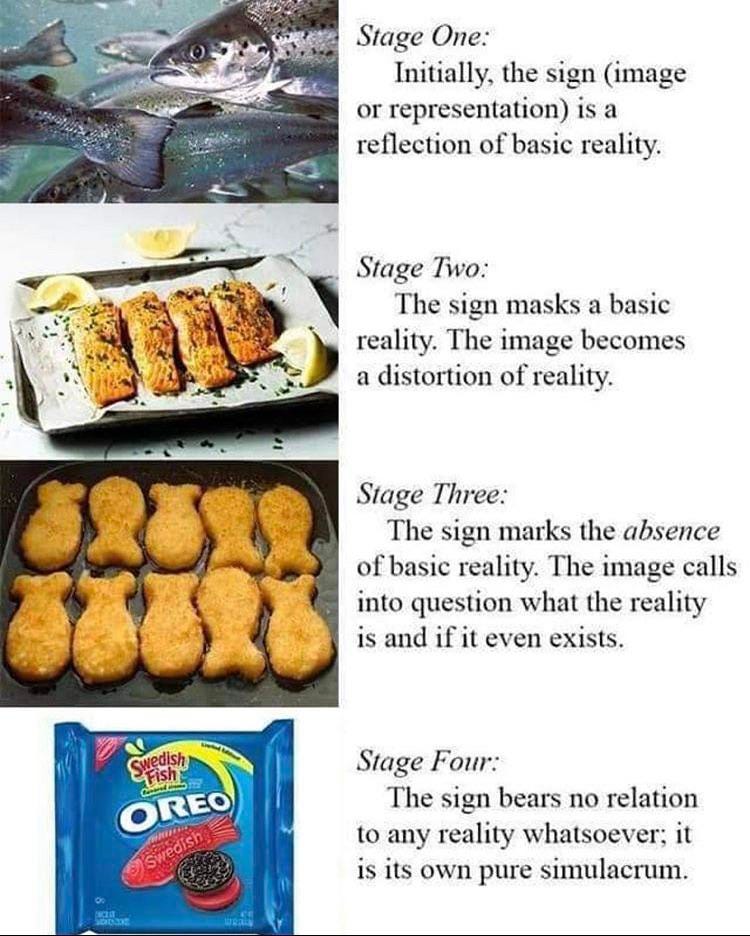How to Give Clear Directions and Avoid Workplace Miscommunication
And the 3 common direction-giving mistakes I’ve fallen into
Stop the “Pls Fix” Mess with These Steps
Ever given directions you thought were crystal clear, only to get a confused “Huh?” or a completely wrong result hours later?
It’s maddening. (But don’t blame your underling—it’s kinda your fault)
You know what you want, you’re telling someone who *wants* to help, but somehow it gets lost in translation.
Bad directions waste time, frustrate teams, and churn out work that misses the mark.
But don’t worry!
There are a few simple ways to reduce how much is lost in translation.
Table of Contents
Then, fully ask (and answer) questions to give all needed context
Finally, watch out for common context pitfalls
(I’m guilty of two of these)
Why Do We Talk Past Each Other?
We talk past each other in business requests, because we often come with different understandings of words, intent, and expertise.
For example, humor is similar.
We’re constantly immersed in culture.
When you use memes, you’re using an image to convey the context for the punchline of a joke.
For example, below, the two photo meme references both Star Wars: Revenge of the Sith1 and The Shining2
The humor comes from the unexpected combination of two contexts:
Obi Wan saying ‘hello there’ to general Greivous
Jack breaking into the bathroom to terrify a cowering Wendy
Without knowing both of those pieces of media, this joke isn’t funny.
(and now likely isn’t either after I explained it)
“Explaining a joke is like dissecting a frog. You understand it better but the frog dies in the process.”
―E.B. White
Business requests are like memes!
They depend on your context.
A request like ‘pull together an analysis of our assets’ is ambiguous without context!
For a financial analyst, this means that you should pull together a profit/loss or depreciation analysis of the value-creating objects.
e.g. how many Dunkin Donuts does your company own?
For a digital marketer, this means to do a review of the images, videos, sound bytes, and other campaign materials for business promotion
e.g. what existing pictures do we have for marketing that don’t require a new photoshoot?
The hard part? No one realizes the implied context they work under.

Now you see how ‘simple’ requests can still have lots of ambiguity.3
There are 3 simple steps to make sure you give enough context that someone can do your request, luckily!
The 3 Steps for Giving Good Directions
Fuzzy instructions are the worst.
You don’t want your team staring at your directions blankly.
If you follow these three steps, you’ll help your team (instead of being a headache)
1. Clarify the Ask
Nail down what you want as if it needs to be an email—short, sharp, unmistakable
Bad: “Sort out the report.” (Which report? Sort how?)
Good: “Break out the sales numbers into a table by quarters for the Friday report.”
2. Align on End State
Tell them what “finished” looks like. It’s an important waypoint
Bad: “Get it to me soon.” (Soon-ish? Tomorrow?)
Good: “Email me the report by noon Thursday with all the charts done.”
If EOD to them means ‘End of December’, your November report may be pretty late.
Set the target, and they’ll hit it.
3. Explain End Goal
Context is king for good results (and happier employees)
Bad: “Write the report.” (Who is the audience? What are they expecting?)
Good: “Get the sales report ready for the exec meeting Thursday—it’s our shot to push for more budget next year. I think we can convince by showing them that each dollar we get turns into 3 dollars of sales. ”
Purpose turns a task into a mission.
Example:
Don’t tell someone
Fix the flyer
Try:
Add our logo top right and make the event date blue text—we need to make sure people see our logo.
I need it by 5 PM for the printer to hit the conference deadline
And these three steps are great for making sure you give good directions.
The next step is making sure you answer (or ask) questions correctly to avoid ambiguity.
Fully Fielding Questions with SCQA
Even with great directions, questions pop up.
Not your fault—theres lots of abstraction in the modern world.
But don’t wing explaining complex ideas—you’ll be likely to ramble through a semi-coherent response.
Instead use the SCQA format (Situation, Complication, Question, Answer) to tackle complex topics clearly.
It’s a framework that cuts through the fog.
If you can write the problem down clearly, then the matter is half solved"
— Kidlin's Law
Situation: Set the scene. “We’re prepping a pitch for a big client.”
Complication: Highlight the snag. “They’re asking for proof our campaign worked, but our data’s scattered.”
Question: Pose the core issue. “How do we show our wins in one slide?”
Answer: Deliver the fix. “Pull Q2 conversion rates, add them to slide 3, and highlight the revenue lift.”
Why SCQA Rocks: It stops the back-and-forth.
No more “What do you mean?” loops.
You give and get a tight, logical rundown.
Here are some great examples of how to fit the structure into a digestible format for your end-consumer:
SCQA is also great when asking questions.
It’s such a good prep step, that you’ll often find that you can answer your own questions after writing them down.
(In this case, the ‘A’ is for your proposed answer)
Example
Instead of asking: “How should I rank qualities for a vendor eval” to your boss.
Try:
S: I’m working with a mechanical engineering firm and they’re wanting to buy new computers for the firm
C: But the CTO and CIO are giving me conflicting instructions about how to weight each factor
Q: How should I proceed to avoid losing the trust of the client?
(proposed) A: I propose that we align more closely to the CIO’s recommendations because he is the end buyer of our services and is the one signing our checks
What do you think?
This format is great for asking questions because it means you get the full context without having as much lag from context switching on other projects.
Now that we know how to give good directions & answer questions, lets cover mistakes to avoid.
Stop These Directions Mistakes
Even with a solid plan, you can still mess this up.
Here are three traps I’ve fallen into 😬 and how to dodge them.
Your team deserves better than a long story of only tangents.
Giving Vague Directions
“Make it better” sounds cool until they’re guessing what “better” means. Be specific or expect bad results.
Why it’s a problem:
“Make this picture better” could be interpreted in more than one way.
A technical user might think that a smaller file size (compressed images) is ‘better’ for usability—but a marketer might think a higher-res photo is cleaner!
Over-Explaining
Don’t turn directions into a TED Talk.
A five-minute story on why you’ve made different choices on the technical architecture? It could be useful for a new member, but it’s probably not relevant to answer ‘How many bikes did we sell?’
They’re zoned out by minute two.
Keep it tight.
Why it’s a problem:
People have finite focus—don’t waste it pretending that they’re listening.
You can also limit the time other people have to speak in a forum (losing good ideas they may have suggested).
Assuming They Get It
You’re in the weeds daily; they might not be.
Don’t assume everyone knows the client’s weird file naming preferences or where the shared drive lives.
Spell it out when giving instructions—set your people up for success.
Why it’s a problem: I’m not explaining why this is a problem to you. I assume you get it.
Pro Tip: After you’re done, don’t hit them with, “Make sense?”
You’ll get “yes”s even if they don’t.
Instead ask ‘What is your next step?’
Conclusion
Clear directions can transform how your team works—and it starts with a few intentional steps.
Use the three-step framework—clarify the task, align on the end state, and explain the goal
Incorporate SCQA to handle complex questions with precision, ensuring everyone’s on the same page.
Steer clear of common pitfalls like vagueness or over-explaining, and you’ll save time while fostering better collaboration.
These strategies aren’t just about getting tasks done—they’re about building trust and efficiency in your team.
Put them into practice on your next project, and you’ll see the difference in results, quality, and speed.
It’s one of the very few times where you get all three points on the production triangle!
The faces crudely photoshopped over the original characters are from this piece
The axe, door, and woman in the purple sweater are from this movie
I’ve never had any clue what a client wants when they ask for ‘a playbook’ on a topic. I have to spend a lot of time actually diving into the need before I can make—or promise—anything






